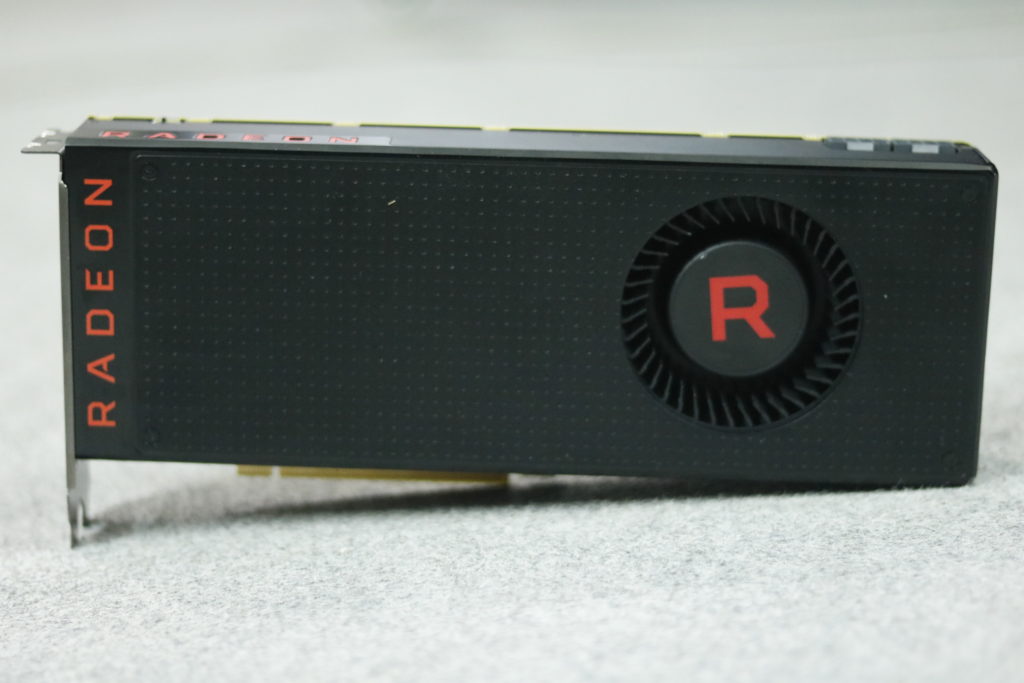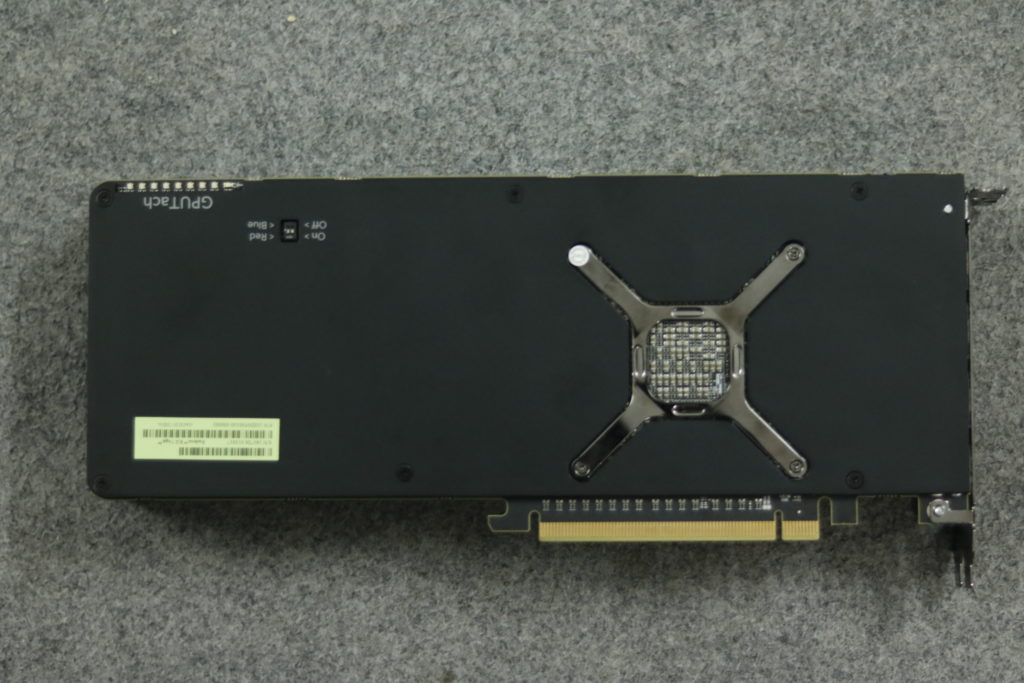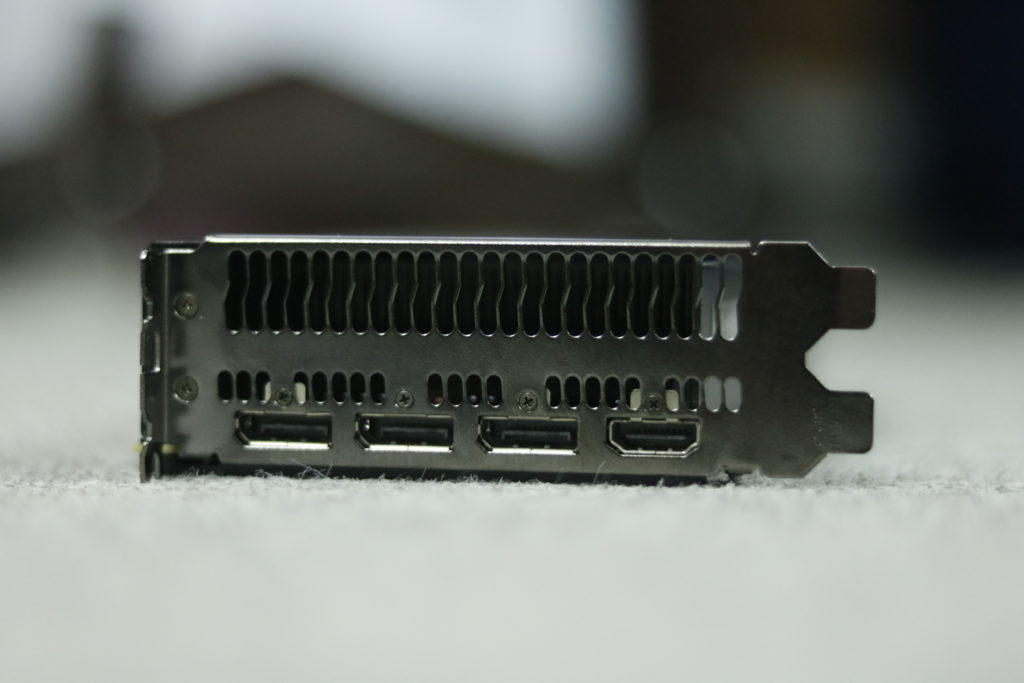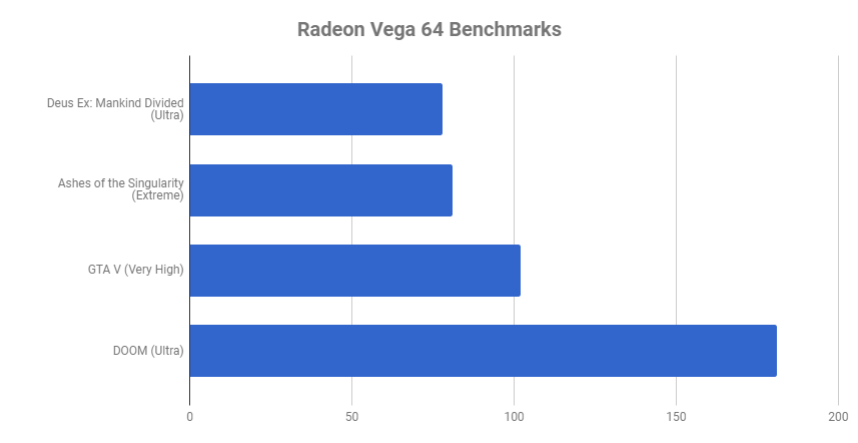The Vega GPUs were finally released last year after a long wait and a lot of anticipation. With the whole world watching, a lot was riding on the shoulders of the new graphics cards as the RX 400/500 series didn’t really have a contender in the high-end segment. Today we check out the stock air-cooled Vega 64. Let’s see how good it is, shall we?
Specifications
| Stream Processors | 4096 |
| Texture Units | 256 |
| Base Clock | 1247 MHz |
| Boost Clock | 1546 MHz |
| VRAM | 8GB |
| TDP | 295W |
The Vega 64 comes with 4096 stream processors and 256 texture units. It has a base clock speed of 1247 MHz and a boost clock speed of 1546 MHz. With an 8GB VRAM, it has a power draw of 295W, which is even higher than the GTX 1080Ti’s 250W. The card comes in a liquid cooled variant as well. You can refer to the table below for a comparison.
| AMD Radeon RX Vega 64 Liquid | AMD Radeon RX Vega 64 | |
| Stream Processors | 4096 | 4096 |
| Texture Units | 256 | 256 |
| ROPs | 64 | 64 |
| Base Clock | 1406MHz | 1247MHz |
| Boost Clock | 1677MHz | 1546MHz |
| Memory Clock | 1.89Gbps HBM2 | 1.89Gbps HBM2 |
| Memory Bus Width | 2048-bit | 2048-bit |
| VRAM | 8GB | 8GB |
| Transistor Count | 12.5B | 12.5B |
| Board Power | 345W | 295W |
| Manufacturing Process | GloFo 14nm | GloFo 14nm |
| Architecture | Vega | Vega |
| GPU | Vega 10 | Vega 10 |
| Launch Price | $699 | $499/599 |
AMD also released three different packs, each with its own sets of features. Both the Vega 56 and 64 are air cooled by default, but there will also be a liquid cooled version of Vega 64 which is only available as part of one of the aforementioned Radeon packs. Each pack costs USD 100 more expensive than the previous one, and comes with two major games published by Bethesda: Prey and the upcoming Wolfenstein: The New Colossus. The packs are as follows:
- Radeon Red Pack: Includes games + Radeon RX Vega 56 for $499
- Radeon Black Pack: Includes games + Radeon RX Vega 64 for $599
- Radeon Aqua Pack comes with a liquid-cooled Radeon RX Vega 64 for $699
On the first look, the stock Vega 64 looks exactly like the stock RX 480, with the same single radiator fan and a black and red scheme. Once you get closer, however, you can see the differences. The card is powered by two 8-pin power connectors and it comes with an LED indicator showing the card’s power draw levels. AMD calls this GPUTach. On the display front, the card has DisplayPort 1.4 ports and one HDMI 2.0. The DVI port has been done away with, making room for bigger vents on the card.
Performance and Benchmarks
The Vega 64 had created a lot of hype, being the high-end contender to NVIDIA’s GTX cards. Due to the lack of a bigger display, we had to limit our tests to 1080p and chose the following games to test the card out.
- Deus Ex: Mankind Divided (DX12, Ultra preset)
- Ashes of the Singularity (DX12, Extreme preset)
- GTA V (DX11, Very High)
- DOOM (Vulkan, Ultra)
Running Deus Ex: Mankind Divided on the Ultra preset, we obtained an average framerate of 78 FPS in DX 12. While the game gives GPUs a hard time, the Vega 64 managed to run it quite comfortably.
We also tested Ashes of the Singularity on the Extreme preset on DX 12 and here the Vega 64’s performance was equally impressive, with the game running at an average 81 frames per second. Testing out GTA V with most settings on Very High, the card was able to push the framerate just over 100, with an average of 102 FPS.
Last we ran DOOM on the Vulkan API, and here the Vega’s performance was incredible, providing a a whopping 181 FPS average on the Ultra preset.
As impressive as the card’s performance is, it runs very hot. Under idle conditions the card sits silent but under heavy loads the fans make a lot of noise. While speeding up there’s a slight whirring sound as well. If that wasn’t enough, if you’re sitting right next to the system you can actually feel hot air blowing from the card, making it rather uncomfortable. Not to mention that it needs a heavy power supply to run, thanks to the large power draw.
The stock Vega 64 may not look very premium, but it performs quite well. The heating and noise issues need to be taken care of, but our guess is that the aftermarket cards would fare much better in that department. The prices are quite high as well right now, thanks to the mining craze, so you might have to wait a while before you can get yourself a good deal.





